It didn’t look good. Dark sapphire pools dotted the bare grey peaks of the Sierras, ringed in too many concentric circles of sediment to count. As I flew above the mountains with NASA scientists on a tricked-out DC-8 plane, the effects of four years of drought were painfully evident to the naked eye. But it’s what we couldn’t see that we were here to study.
For a week this summer, NASA’s flying laboratory did loops over California as part of the Student Airborne Research Program, known as SARP. Students from all over the country work closely with the agency to collect data to study topics from industrial pollution to the health of local forests.
And for the past few years, the effects of California’s drought.
NASA satellite imagery and footage from SARP flights show the dwindling snowpack of the Sierras
Of the six missions that flew this year, most had some connection to the state’s increasingly arid climate, from the way agriculture affects air quality in the Central Valley, to the airborne pollution generated by the slow demise of the Salton Sea, the gigantic toxic lake east of Palm Springs.
One mission was of particular interest to me: The crew planned to fly over several agricultural sites in the Central Valley, then extremely close to the Sierra Nevada mountain range to examine the local impact of its nearly nonexistent snowpack. This was the flight I boarded on a blisteringly hot June afternoon.
A Flying Lab
About 60 miles north of LA, I pull up to a sand-coloured corrugated metal complex fringed by Joshua trees. This is NASA’s Armstrong Flight Research Center, situated adjacent to Edwards Air Force Base at the edge of the Mojave Desert.
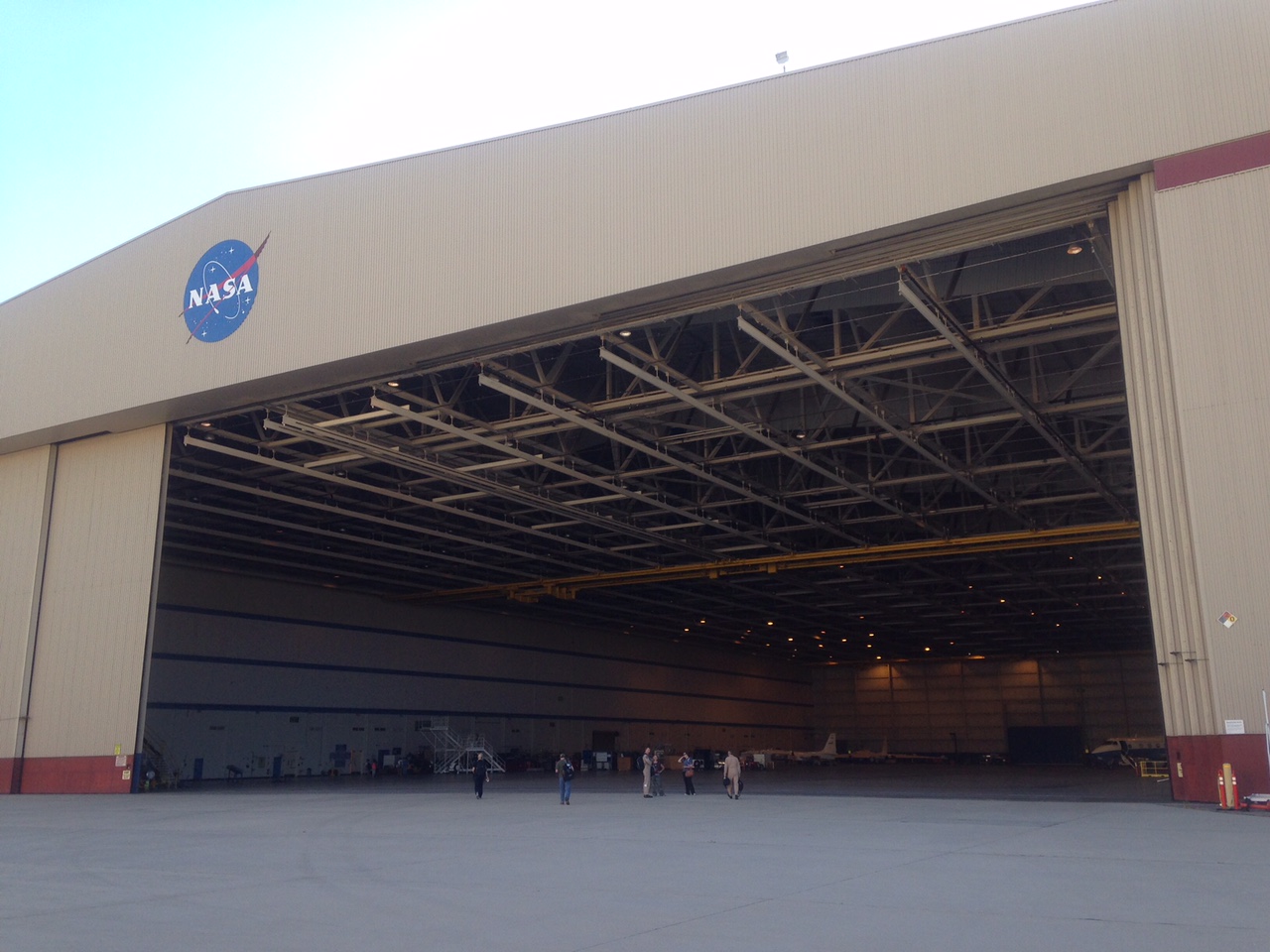
The hangar at NASA Armstrong, filled with aircraft modified for science research
I enter through a giant hangar filled with aircraft departing on other NASA missions — the suborbital Stratospheric Observatory for Infrared Astronomy (SOFIA), which is a telescope mounted on a modified Boeing 747SP, is managed out of the Armstrong research center. Although Armstrong’s current focus is on atmospheric flight research and environmental science, there’s a wealth of NASA history here: It served as a test facility for several orbiters and as the alternate landing site for the Space Shuttle Program. I receive my flight training in a room flanked with spacesuits and crates labelled “cosmic dust project.”
After learning the major differences between an airborne science mission and a flight to Vegas — no beverage cart; deploying one’s oxygen mask involves putting a huge mylar bag over your head — I head to a conference room for the mission briefing.
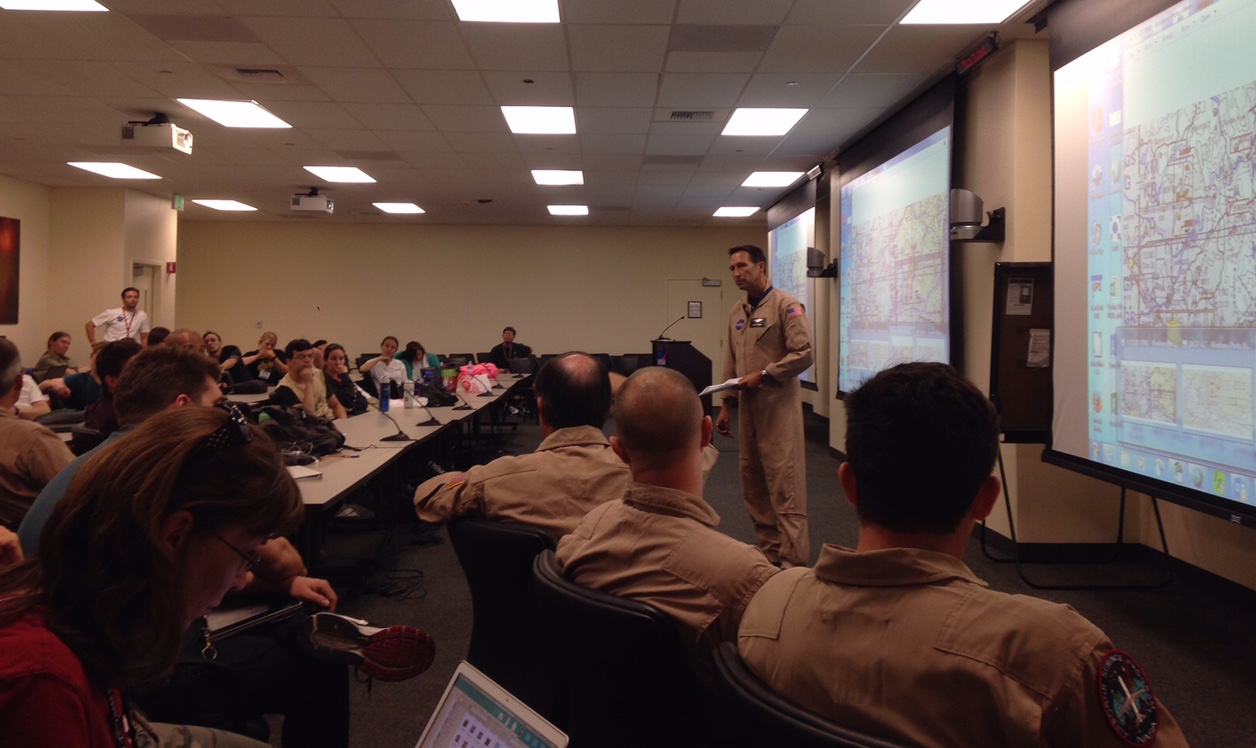
Going over the mission objectives with NASA pilots flying the SARP missions
Today’s flight path looked like someone threw a handful of cooked spaghetti against a map of California. What’s more, the plane would be making steep descents to gather air samples close to the ground — all over mountain passes with naturally turbulent air. We were in for a wild ride.
From the tarmac, NASA’s aircraft doesn’t look too different from your typical ageing DC-8. But as you board, you start to see a few differences. Like the windows on one side of the plane, which have been popped out and replaced with a series of tubes spiking out the side.
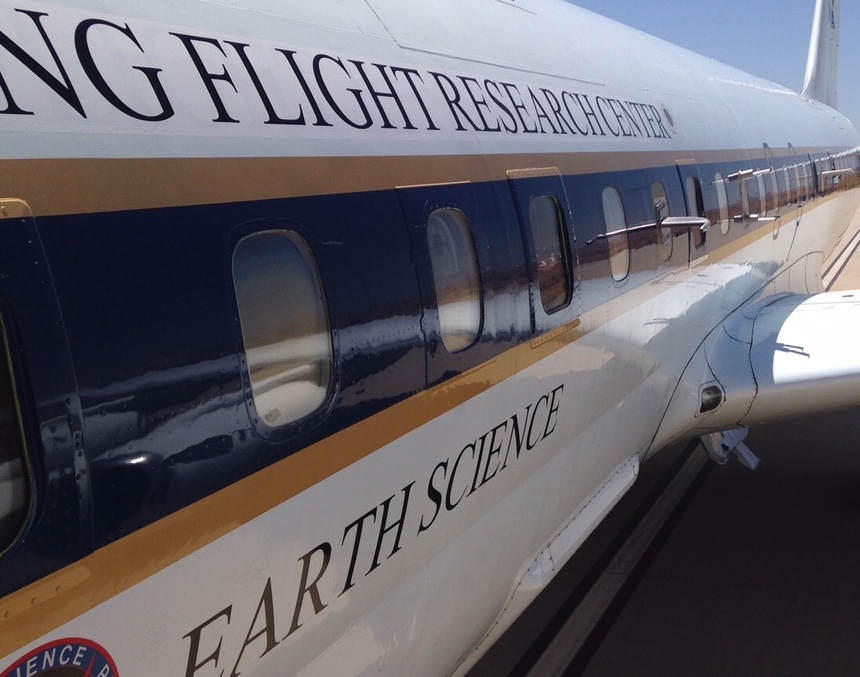
Various remote-sensing tools and air sample collection devices cluster around the center of the DC-8
Inside, this is no cushy commercial airliner. The plane has been completely gutted, then loaded back up with a rotating lineup of scientific equipment that’s bolted to the aircraft’s shell. In the place of row 12, seats A, B and C are a wall of valves, flickering monitors, and nests of plastic tubes.
The vibe is somewhere between modern-day data center and 1980’s-era RV. A handful of old leather airline seats are sprinkled throughout, laced with the black cords of heavy-duty headsets with noise-cancelling headphones. Without the insulating materials on a commercial aircraft, the noise is deafening; ear protection is a must.

Students and NASA scientists work side by side in the flying lab
Among the array of experiments strapped to the floor are tools like a LIDAR system to measure distance, devices that can gather air samples in mid-air, and remote-sensing instruments that can read the levels of particles like aerosol and methane. Other scientists work with NASA to get their experiments onboard the DC-8 — the same plane flew to Kansas for a storm-chasing mission we covered here on Gizmodo. SARP research mentor and polar researcher Shane Grigsby was able to test some instruments on the DC-8 before taking them to Greenland and Antarctic to study icebergs. “This way we can make all of our mistakes by testing things stateside,” he says.
Strapped in, headset on, the plane taxis to takeoff, sailing over the salt-crusted dry lakes of the high desert. After a few minutes we drop down into the green checkerboard of the Central Valley where we’re greeted by a thick layer of brown haze.
Science at 13,000 Feet
“Yesterday was rough, three people puked,” laughs Matthew Irish, a Climate Impact Engineering major at the University of Michigan. He’s crouched near the Whole Air Sampler (WAS), an instrument that slurps up tubes of air from outside the plane. The dozens of valves and canisters clustered around him make this part of the plane feel festive, like a high-tech microbrewery or helium tanks awaiting balloons.
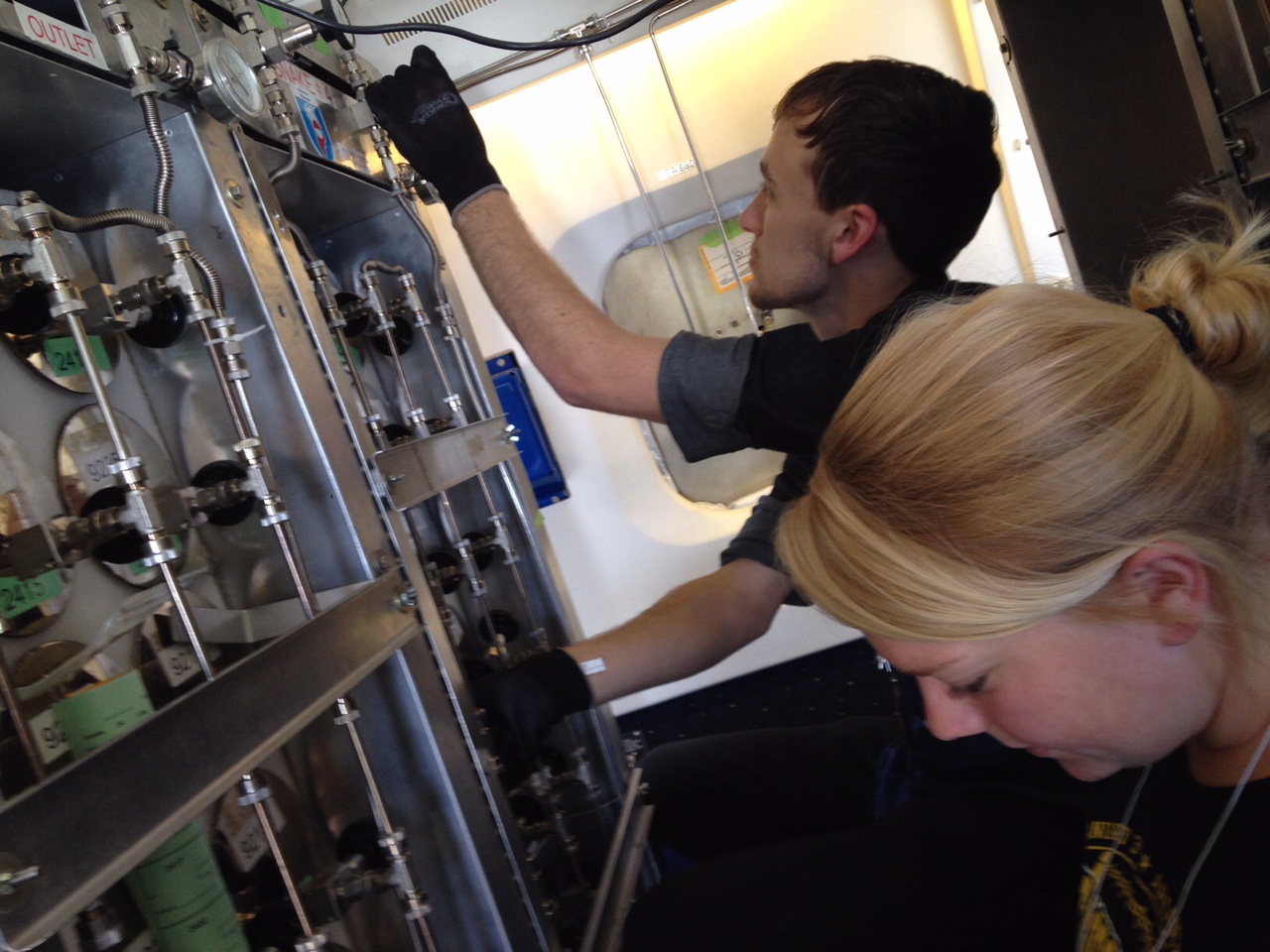
Matthew Irish and Marilyn Jones fill air samples from a tube mounted on the outside of the plane
Irish’s role is to fill up an canister with air samples by slurping it up from the exterior and into the tubes, which they call snakes. “We actually have snakes on a plane,” he jokes. There’s really no other way to gather the samples — the plane must first be flying at a certain elevation and speed to take the air from the right place, and then he has to manually siphon the right amount of air into the canisters. He’s only got a very short window to take the sample.
His hand hovers over the valve, waiting for the OK from University of Missouri student Marilyn Jones. She sits on the floor next to him, holding an iPad with the same real-time navigational data from the cockpit. “Right now we’re at 13,000 which is pretty high, so we’re doing some low-frequency filling of the cans,” said Jones. “But down at 6,000 feet we’ll be doing it every minute.”
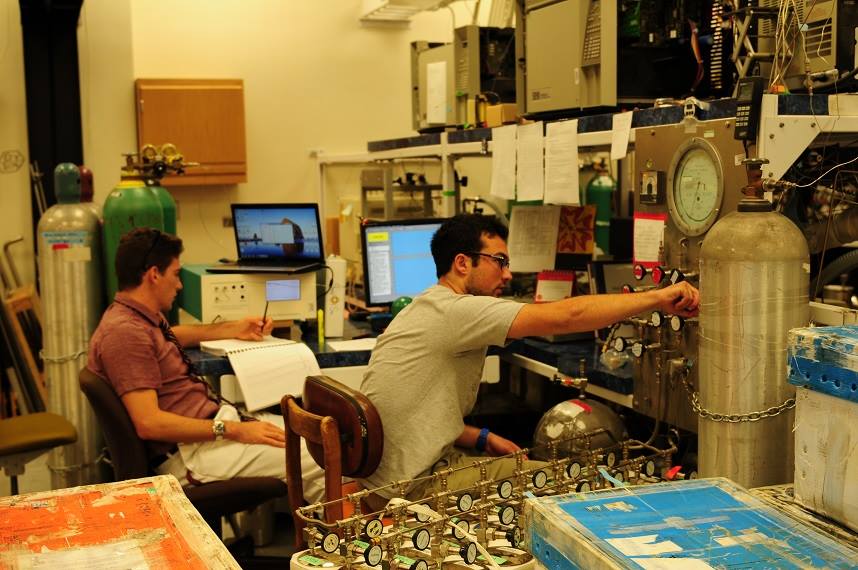
Thomas Owen Mazzetti and Brad Garczynski evaluate WAS samples in Irvine
While the WAS canisters must be taken back to the lab for analysis, some of the instruments collect data in real-time, like the Ultra High Sensitivity Aerosol Spectrometer (UHSAS-a) which measures the small particulate matter. Other tools are able to detect gases like carbon monoxide, methane, and ozone levels. “There’s about 100 different trace gases we can look at,” says Irish. “I want to look at the greenhouse gases that are coming off the Bakersfield oil fields and over some dairy ranches.”
As Irish readies for his next pull, we make one of the hairpin turns I saw on the flight plan. I watch the horizon disappear as the plane lurches and dives ridiculously close to a granite-topped peak. I had forgotten all this time, but now I remember I’m on an aeroplane. My now-wobbly legs search for a seat. A few minutes later, I lost my lunch, too.
Focusing on Drought
Back at Armstrong’s flight center, I had noticed a calendar on the wall with a photo of California’s better days: a NASA satellite image from June 2011, the Sierras frosted with snow. Up here, sailing over 14,000 foot peaks only barely flecked white, it’s hard not to worry about water.
“It’s definitely in the back of our minds,” says John Murray, a student from Fordham University. “Anytime you get a meteorology report, there’s no precipitation, no humidity in the air. But it’s also because we’re doing a lot of climate-related research now that will be used to manage the drought or deal with climate change in the future.”
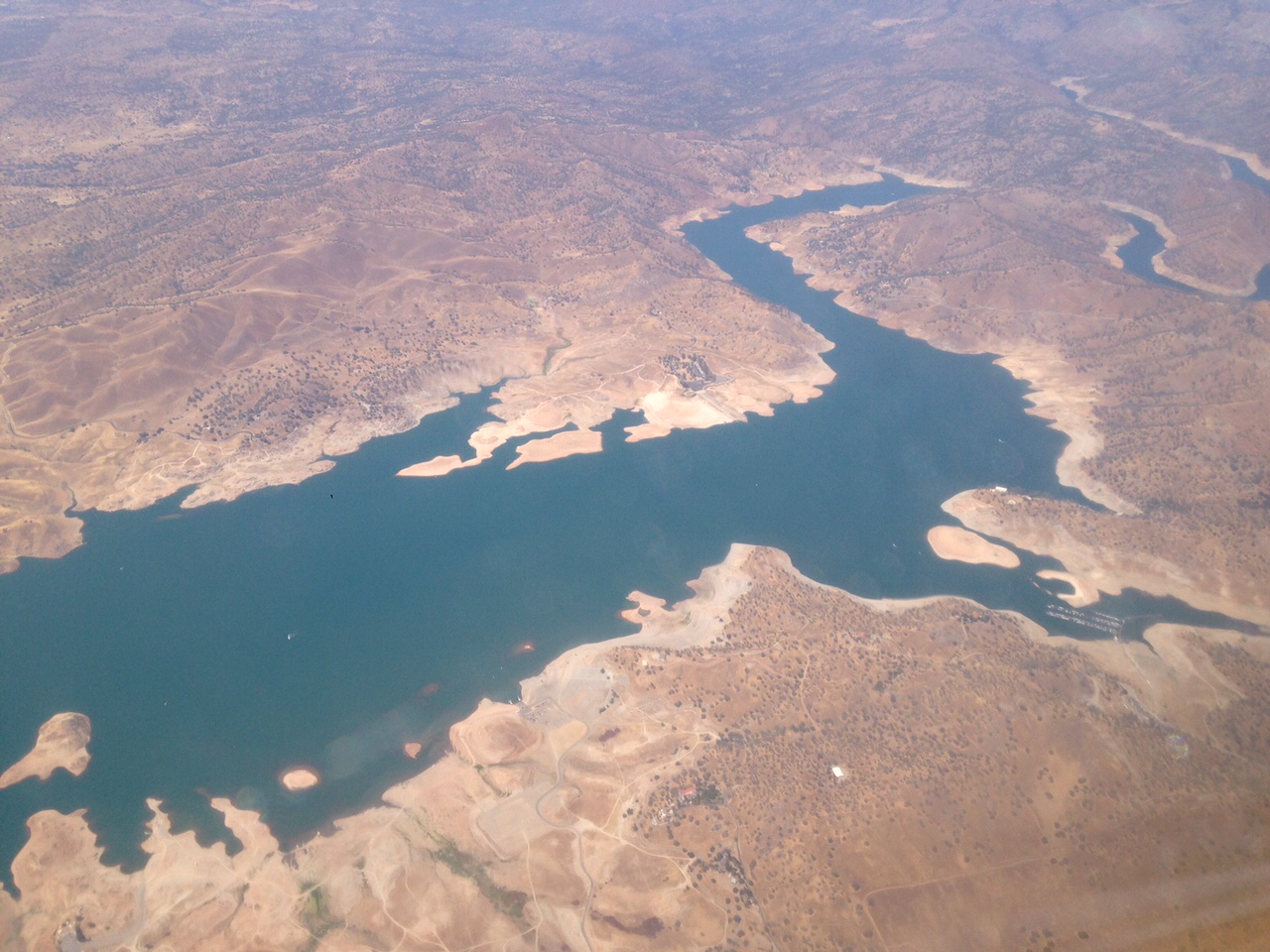
One of the many shrunken California reservoirs seen from the sky
Sometimes drought-related events even change the trajectory of the students’ research. Last year, the giant Rim Fire burning just outside Yosemite gave students the opportunity to fly through the smoke to take air quality readings. This year, they’re studying the debris from the fire-scarred area.
Another perennial drought-related topic is CO2 flux. Andreas Beyersdorf works on the Atmospheric Vertical Observations of CO2 in the Earth’s Troposphere (AVOCET) instrument installed on the DC-8. On this mission AVOCET was looking at the CO2 levels in agricultural vs. forested areas, and comparing that information to various imaging data.
While satellites are helpful for some tasks, AVOCET is able to track specific air masses. So they can take samplings in the LA Basin then see how those might change downwind in the Imperial Valley, for example, tracking the type and health of the vegetation below the entire way. “Here we can have a full sweep of all the chemistry and how it all interacts,” Beyersdorf says.
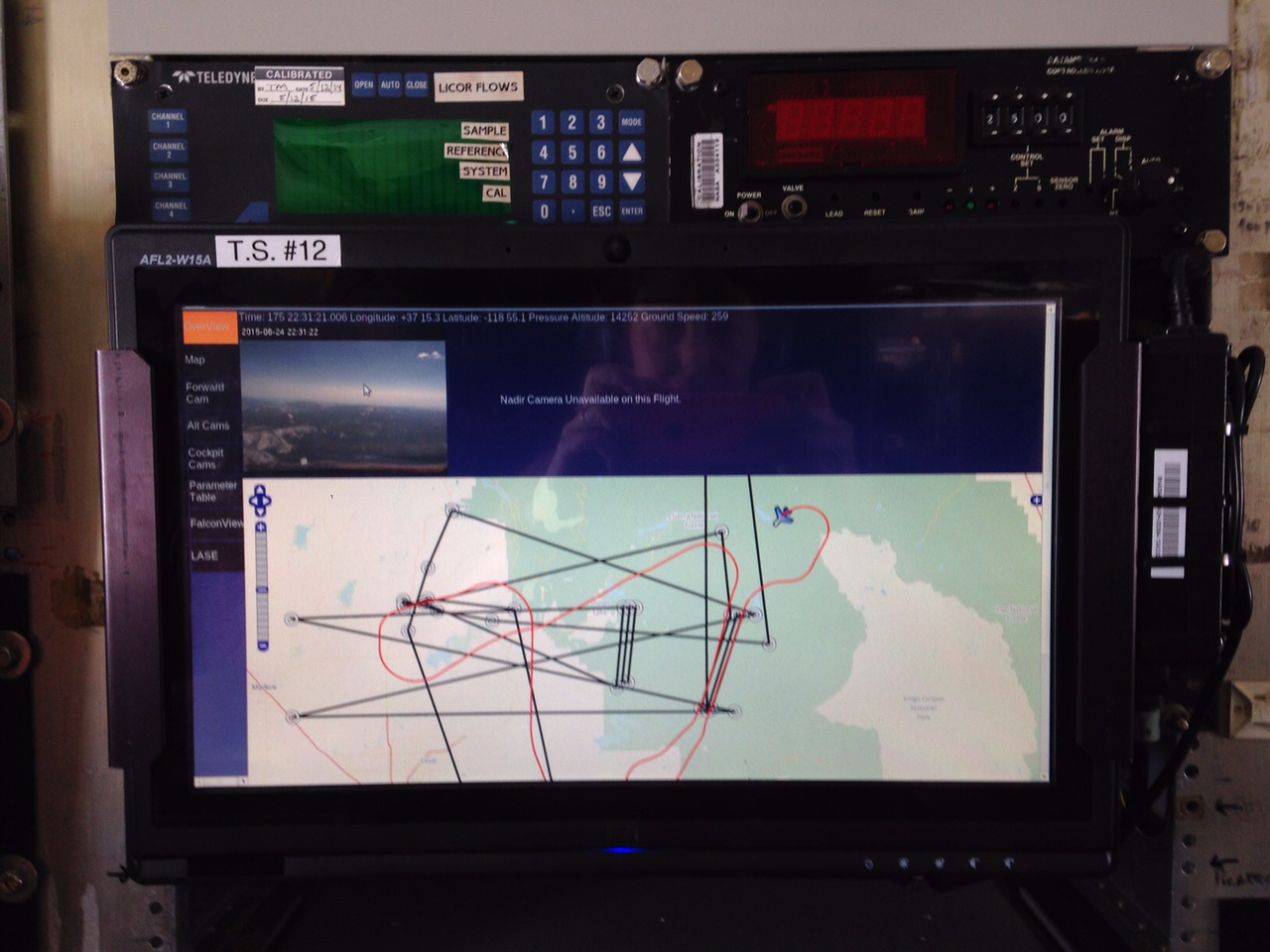
Nailing the right flight lines to gather samples in a DC-8 is not easy but the pilots are pros
As we fly, the scientists provide real-time commentary on that chemistry. Every few minutes someone would report spikes in ozone, carbon dioxide, or methane, geotagging the data to look at correlations on the ground later. There’s lots of methane wafting up from below. In fact, it’s lack of water — or rather, the lack of water decimating plant life — that’s likely to blame for the vat of pollution that’s parked on the eastern flank of the Central Valley today.
As we land, I start to realise that the drought is not just about depleted reservoirs. It’s also affecting air quality in ways that we probably don’t even understand yet.
Cannibalistic Trees
For the last few years SARP has collected extensive CO2 flux data in local forests, giving NASA fairly complete pictures of tree life before and after the drought. The health of the water-starved Sierra forest was top of mind for Jessica Mazzi, a biology major at Portland State University. Her SARP study looked at CO2 flux changes over time in plants due to insufficient water.
She could see what appeared to be dead or dying trees from the plane so she began by using remote-sensing towers and air samples to look at CO2 uptake around trees that visually looked dead to see if they were indeed photosynthesizing. “I started comparing different years and it looked like there was an overall decrease in photosynthesis,” she says. In some cases she was seeing as much as a 50% decrease in photosynthesis over three years.

A slide from Mazzi’s study showing the decrease in CO2 uptake from the same flight lines year after year
It was not only the overall decrease that concerned her; it was when the trees were photosynthesizing — all the activity was happening far earlier than solar noon. After this point they’d switch to respiration, which means they’d take in oxygen instead of producing it, and give off tons of carbon dioxide and water. The drought-stressed trees were essentially devouring the food they made. “This is so gory,” she says, “But the trees are dying off from eating themselves alive.”
Reports earlier this year estimated that the drought had already killed 12 million trees, and Mazzi believed it — she saw it the evidence for herself. “These are giant trees, 20, 30 years old, and they’re totally dead. It was crazy to see.”
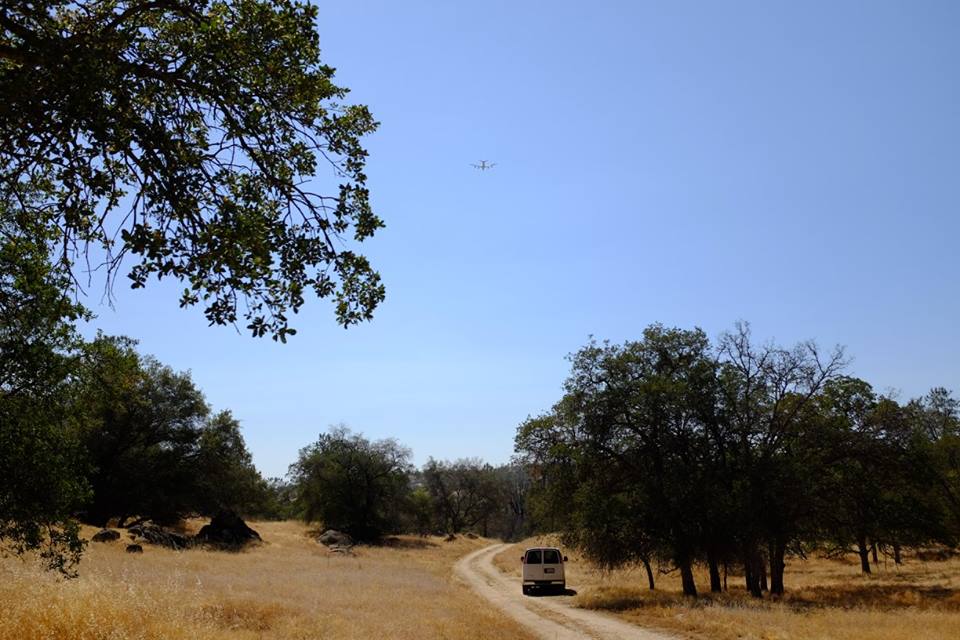
The DC-8 flies over the Sierra Nevada Research Center as students collect data on the ground
Like snowpack stores our future water, trees “store” our future oxygen. They also act as a carbon sink. Forests weakened by drought are actually pumping CO2 back in to the atmosphere. But dead trees pose an even greater danger. As Mazzi concluded her study, two big climate-related events occurred: Very confident forecasts were released for a giant El Niño and a record-breaking wildfire season ignited the western third of the continent. “There are two extremes we have to consider now,” says Mazzi. “It’s been dry for so long, so when rain does come, how is it going to drain properly? But fire is the bigger risk.”
You can see all the studies which came out of SARP this year, some of which explain the potential devastation of these wildfire vs. El Niño drought finales. In the bigger picture, it may not only be the lack of water that will have the biggest impact on our environment. The long-term effects to our health and well-being are likely still to be discovered.
Picture: Satellite images NASA; footage courtesy NSERC ARC-CREST; photos by Jane Peterson, National Suborbital Education and Research Center and Alissa Walker
